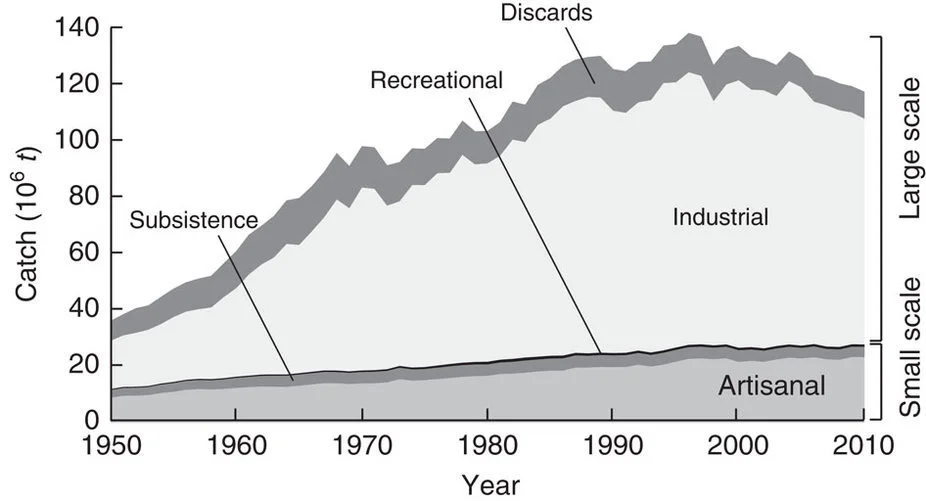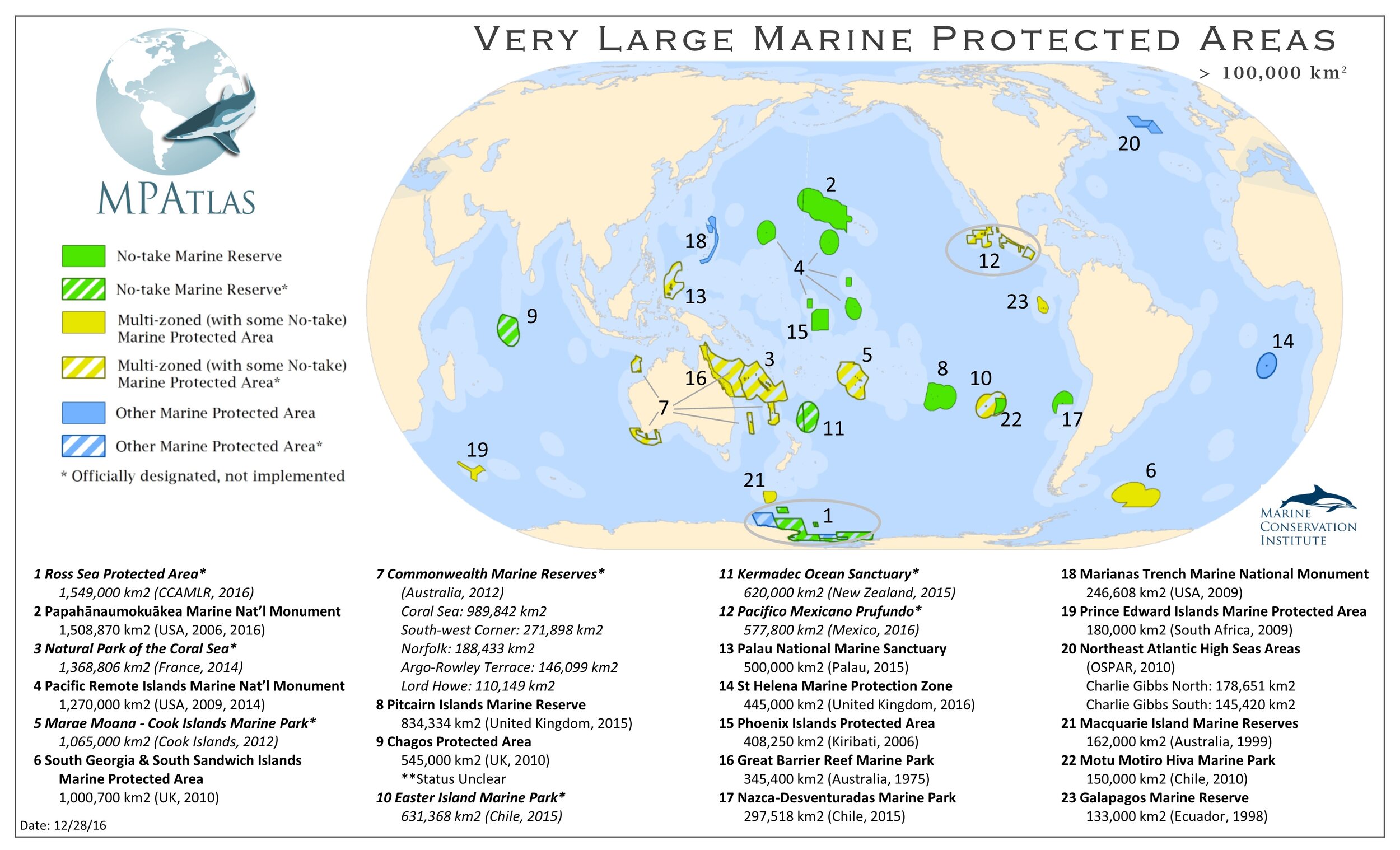Top 10 Ocean Conservation Victories of 2016
Originally published on the (now archived) National Geographic blog.
January 5, 2017
Silky shark, a species that received protection under CITES this year. (Photo: Alex Chernikh via Wikimedia Commons)
From wars, to politics, to the deaths of eminent artists, 2016 was a year many people were eager to see end. It was also another record breaking year for the dangerous warming of our planet. Yet, despite that thick layer of doom, humanity came together in inspiring ways – for water protection, for refugees, for black lives.
That duality of doom and inspiration also pervaded the year in ocean conservation. Overfishing, climate change, pollution, and coastal development continued to threaten the very foundation of marine ecosystems. But, undeterred, we incessantly chipped away at these enormous problems. Here are the successes of 2016 I’ve been most excited about.
1. Common sense fishery management. Major US fish stocks that had been severely depleted have been rebuilt through strict catch limits based on scientific research. To protect deep sea corals, the US banned bottom trawling in an area offshore of New York and New Jersey. The Cayman Islands banned fishing of Nassau Groupers during their spawning season. More broadly, future management will have a more solid scientific foundation thanks to a decade of research by the Sea Around Us Project concluding that we catch 50% more fish than is reported by governments. This is good news because it means the ocean is more productive than we thought. But it comes with the bad news that global catches are declining because we still fish far too much.
2. Better technology for enforcement and management. Global Fishing Watch (a partnership amongst SkyTruth, Google, and Oceana) went live, allowing us to see when and where commercial fishing is occurring and to pinpoint illegal activities. We now have satellite image proof (see below) that fishing has effectively ceased in the Phoenix Islands Protected Area – especially good news as large and remote areas are hard to enforce. Generally, it’s encouraging to see the tech community get more engaged in ocean issues, such as through the XPrize/HeroX Big Ocean Button Challenge, which is recruiting developers to make apps using valuable ocean datasets.
Map of fishing effort around the Phoenix Islands Protected area. (via Global Fishing Watch)
3. Combatting pirate fishing. Boats that fish illegally will now have a much harder time bringing their catch into ports. Twenty-nine countries and the EU ratified the Port State Measures Agreement to cooperate on tracking and prosecuting illegal, unregulated, and unreported (IUU) fishing. The US now requires tracking of imports of at-risk species (like sharks, shrimp, cod, tuna, and snapper) to prevent fraud and IUU. Palau is working with Global Fishing Watch and Greenpeace to prevent and prosecute IUU fishing in their new marine reserve. Thailand and Indonesia are also serious about enforcement, and have captured and sunk scores of pirate fishing boats.
4. Getting slave labor out of seafood. Intrepid reporting shed needed light on the horrifying human rights abuses associated with industrial fishing, most notoriously slavery on Pacific tuna boats and in Thailand’s shrimp processing plants, but also the abandonment of crews stranding them penniless and far from home. Advocacy groups have put pressure on supermarket chains to prove no slavery was involved in producing the seafood they sell, which has in turn put pressure on the fishing companies to clean up their acts.
“Children and teenagers sit together to be registered by officials during a raid on a shrimp shed in Samut Sakhon, Thailand, 9 November 2015.” (via The Guardian, Photo: Dita Alangkara/AP)
5. Big marine reserves. 2,500,000 square kilometers of ocean were protected from fishing this year. Twenty-four countries collectively created the world’s largest marine reserve (twice the size of Texas) in the Antarctic’s Ross Sea. President Obama quadrupled the size of the Papahānaumokuākea Marine National Monument in Hawaii and created the first marine monument in the Atlantic, the Northeast Canyons and Seamounts Marine National Monument (although there is contention about whether the stakeholder consultation process was inappropriately circumvented). The United Kingdom protected the waters around Pitcairn and St. Helena Islands. Russia protected Franz Joseph Land in the Arctic. (But currently only 1% of the ocean is protected from fishing of the ocean from fishing, while scientists recommend at least 30%.)
6. Protection for endangered species. Three shark species received international protection under the Convention on International Trade in Endangered Species (CITES), along with mobula rays and the glamorously-shelled nautilus. The agreement aims to prevent extinction of vulnerable species due to international trade, and it already protects several corals, sea cucumbers, and all sea turtles and seahorses.
7. Native Americans as water protectors. Over 100 Native American tribes came together around the Sioux people in Standing Rock to protest the Dakota Access Pipeline and protect drinking water. Far less well-known are victorious legal battles waged by tribes in the Pacific northwest, which have prevented construction of coastal coal export terminals which would damage important fish habitats. The court agreed that the tribes’ right of access to fishing means the government must ensure the fish continue to actually exist there.
8. Ocean zoning becoming mainstream. The Northeast and Mid-Atlantic regions of the US now have Regional Ocean Action Plans, born out of federal and state collaboration with stakeholders. These plans create a framework for balancing the many demands on coastal waters (from fishing to shipping to energy), and similar plans are in development for the other US coastal regions. Australia, the EU, and Antigua & Barbuda, among others also have zoning plans for their waters. SeaSketch continues to work behind the scenes in many countries (including New Zealand), building and leverage software that enables stakeholders to participate in mapping.
Map of energy leases, whale migrations, soft corals, artificial reefs, shipping, and gill net fishing in the Mid-Atlantic ocean. (Via Mid-Atlantic Regional Ocean Action Plan)
9. Prohibition of drilling in the Arctic. Canada and the US jointly the announced their plan to indefinitely close their Arctic waters to drilling. And it is heartening how native tribes have been consulted and prioritized in this policymaking process.
10. Cleaning up our beaches. India completed the world’s largest beach clean-up, removing more than four million pounds of debris from a single beach, through a year-long volunteer effort. Ghana, Mauritius, Senegal, Morocco, and France banned plastic bags, and California's plastic bag ban was upheld by voters after being challenged by industry.
Bonus victories:
- ‘The Codfather’ of New Bedford, Massachusetts was arrested and charged with smuggling. Prosecutors say that he lied about over 800,000 pounds of fish his fleet was caught in order to evade fishing quotas and cash in big.
- In Tampa Bay, Florida, seagrass meadows that had almost vanished due to toxic pollution have been restored. This was announced in 2015, but slipped through the cracks of my list last year.
There is a steady drumbeat of good news in ocean conservation. It’s not nearly enough, but it’s very far from nothing. This April on Earth Day, there will be an Earth Optimism Summit to discuss the many important successes in conservation around the world, and share effective strategies and tactics. My focus for the coming year (see “Reframing Ocean Conservation in this Post-Election Era“) will be working at the intersection of ocean conservation, social justice, and community building. In 2017 let’s double down on what’s working.
For more inspiration, catch up on previous victories (“14 Ocean Conservation Wins of 2014" and "Top 15 Ocean Conservation Wins of 2015“) and check out OceanOptimism.org and #OceanOptimism.






